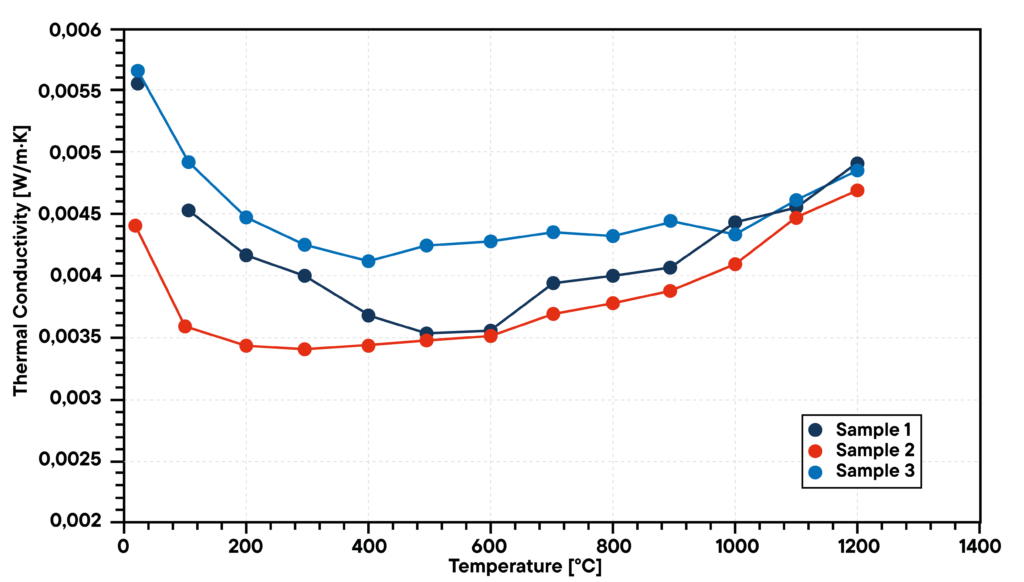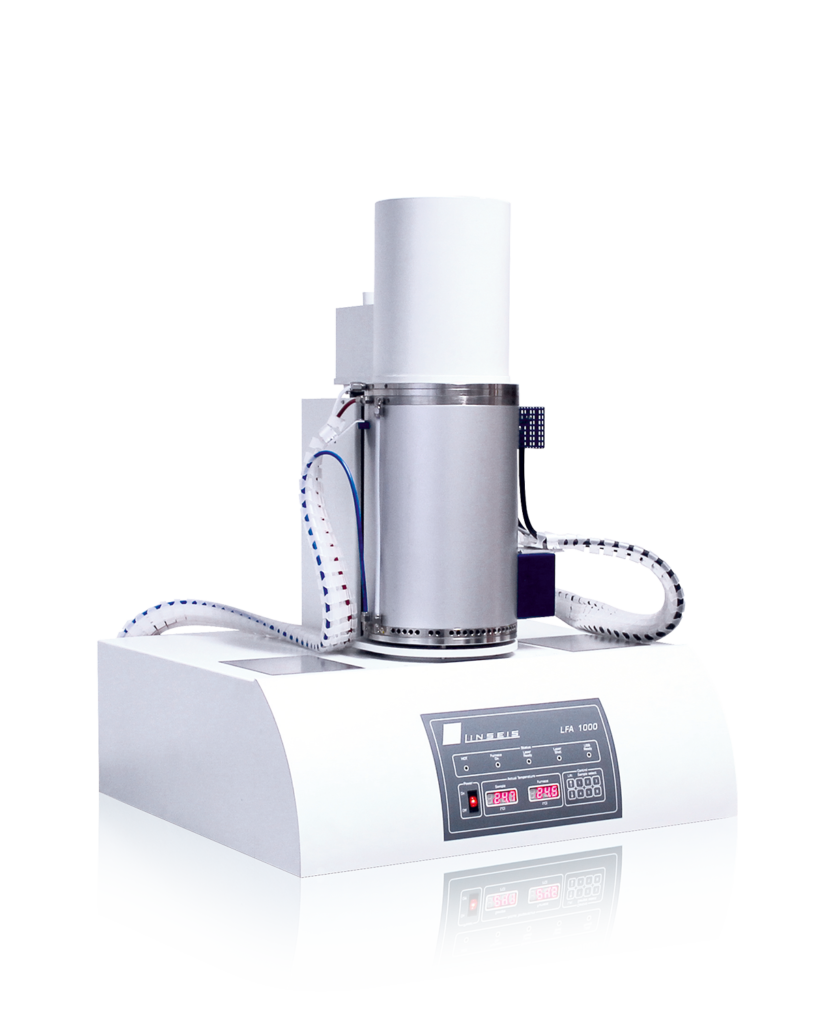Refractories are inorganic, nonmetallic materials which are designed to withstand very high temperatures. At these high temperatures they are physically and chemically stable and can also withstand physical wear and corrosion caused by chemical agents. Refractories are typically ceramics and are composed of oxides of silicon, aluminium, calcium, magnesium and zirconia.
Application fields are mostly iron- and steel-industry, glass industry, energy and environmental technology and petrochemical industry. Refractories are for example used in furnaces, as fireplace brick linings or in reentry heat shield for space shuttles. For some applications the material must have specific ranges of thermal conductivity and coefficients of thermal expansion. Thus, the investigation of thermal properties is important.

In the above shown measurement three different refractories were investigated by LFA L52 from room temperature to 1200 °C. One can see that all show firstly a decrease of the thermal diffusivity and for higher temperatures the thermal diffusivity increases. All refractories have a rather low thermal diffusivity.

